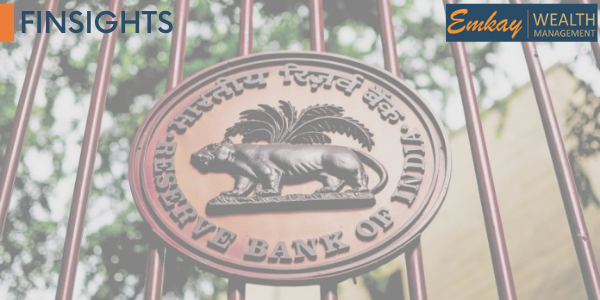The Policy Action
RBI has hiked the Repo Rate by 50 basis points taking the policy rate to 5.90%, and the SDF rate to 5.65%. The policy action confirms the stance of the central bank and that tightening will continue till price stability is attained.
The Background
➢ The policy has been announced against the background of persistently high inflation across all major
economies and aggressive rate action by all major central banks. The inflationary pressures remain real for the domestic economy too, at around 7% as per latest CPI numbers. This requires rate action from the RBI, not only to contain inflation but also to maintain the currency yield.
➢ The Rupee is at its weakest level ever and it looks set to touch still lower levels. The current account deficit has been widening. The exit by overseas investors from the equity market has contributed significantly to the currency weakness. Though the level of depreciation of the Rupee is not as high as
it is with other currencies, the weak currency is a matter of concern as it transmits inflation to the
domestic economy. The Rupee slide would require the RBI to take rate action.➢ The inter-bank liquidity is dwindling and it borders on deficit. While the forex intervention has been
taking liquidity out of the market, the pressure on short term rates will rise unless liquidity comes back into the markets in some form or the other. At the same time, being serious about the withdrawal of accommodation the liquidity expansion may have limitations except as a very short-term money market operation.
Growth & Inflation Projections
The expected inflation is retained at 6.70% for 2022-23, with Q2 at 7.10%, Q3 at 6.50%, and Q4 at 5.80%. These levels are progressively lower but far higher than targeted levels. The real GDP growth projection for 2022-23 has been lowered to 7.00% as compared to 7.20% earlier, and Q2 at 6.30%, Q3 at 4.60%, and Q4 at 4.60%. The full year growth estimates have been revised marginally downwards to incorporate the impact of slower than expected growth in Q1FY23. On the inflation front the levels are unchanged from the earlier projections.
The borrowing calendar has not thrown any negative surprises, in terms of increased borrowing. The inflated food and fertiliser subsidies were expected to put upward pressure on government borrowing. The tax collections have been robust till date for FY23, and the government not breaching its initial borrowing estimates (Rs. 14.31 lakh crores) indicates that tax receipts are expected to maintain the trajectory for the remainder of the year. The stable growth projections and government borrowings staying within estimates is one of the factors that provides the RBI headroom to continue with its stance of “withdrawal of accommodation”
Perspectives
The series of rate hikes by the RBI in response to inflation is going to continue and the impact of the policy will be felt gradually as short term rates start edging higher. The overnight and call rates as well as the yields on CDs and CPs are likely to move up in the coming months due to the liquidity coming down in the interbank markets and also because of banks and financial institutions hunting for deposits. The liquidity conditions may be cushioned by the increased government spending in the second half. This becomes more relevant against a high credit growth of close to 18%. There seems to be a shift from market-based borrowing to the bank credit as far as corporates are concerned.
As mentioned earlier, the currency yield will also have a critical influence on the monetary policy. The two factors which are of import in this context are, 1) yield on USD and 2) domestic real yield. In this context, the RBI mentioned in its policy note that “even as the nominal policy repo rate has been raised by 190 basis points so far (including today’s increase), the policy rate adjusted for inflation trails the 2019 levels”.
The rates at the short end of the curve is set to rise and CD and CP rates may target 7.50% to 8% in the next two to three months. The long end rates too may move up but the pace may be slower. The 10 Year benchmark may look to retest 7.60% level, and has the potential to inch higher to 7.80% as well.


